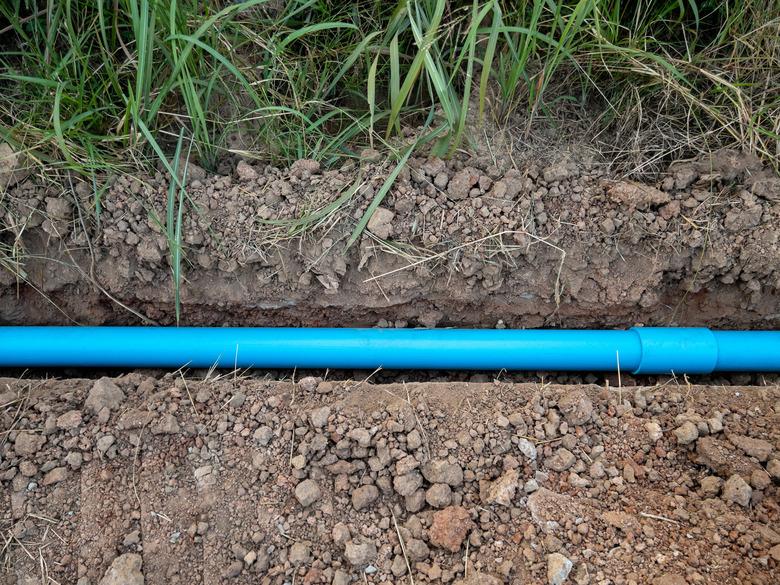How To Locate Underground Plastic Pipes
We may receive a commission on purchases made from links.
Most people know that you should call 811 before digging on your property, but not everyone knows that this free service only maps public utilities, like water, electrical, sewage, and gas lines. It won't help you if you're looking for sprinkler pipe that you or a previous owner installed, a water pipe feeding an outbuilding, or even septic or sewer lines that were installed privately.
If any of these pipes are made of PVC or polybutylene, they are more difficult to locate than metal pipes. You can use a metal detector to find metal pipes and even PVC conduit containing electrical wires because the wires are metal. To find plastic water and sewer pipes, you may have to hire a pro, but before you do that, try some DIY tricks first.
Determine the General Location of the Pipes and Then Probe
Determine the General Location of the Pipes and Then Probe
Underground water pipes generally run in a straight line from the water source to the fixture that distributes water, so if you know where those are, you have a general idea of where the pipes should be. Sprinkler lines, for example, run from the valve to the sprinkler heads, and these are both easy to find. A septic waste pipe runs from the house to the septic tank — both easy to locate — and the pipes that feed a septic drainfield branch out from the septic tank or from a distribution box, which usually has a cover that is at ground level.
Once you know roughly where to find the pipe, push a T-handle probing bar into the ground in that vicinity. Push gently until you feel resistance, which is probably the pipe. You're unlikely to find the pipe on the first try, so move a few inches in both directions and try again. Then, move a little farther and try once more. This trial-and-error method may take a while, but keep probing and you should eventually be successful.
Use a Metal Detector or PVC Pipe Locator
Use a Metal Detector or PVC Pipe Locator
A plastic pipe has no metal, so a metal detector can't locate it unless it contains electrical wires or, by a stroke of luck, if the person who buried the pipe buried tracer wire with it. Since this is a possibility, you can try looking for the pipe with a metal detector, which is a fairly inexpensive piece of equipment. If one end of the pipe is open, you may even be able to feed tracer wire into it and use a metal detector to find the buried part.
If you don't have any luck, the alternative is to use a PVC pipe locator, which uses an acoustic signal or ground-penetrating radar to locate the pipe. Plastic pipe locators are neither cheap nor easy to use. Renting one generally isn't an option because it takes skill and experience to interpret the signals from these devices. If you think the pipe may be buried too deep for a probe to find, your best bet is to hire a pro who has the necessary equipment to locate it for you.
Bury Tracer Wires With Plastic Pipes
Bury Tracer Wires With Plastic Pipes
Realizing how difficult it can be to find buried PVC and poly pipes provides motivation to include tracer wire in every trench in which you bury these types of pipes. If you do that, you'll always be able to locate the pipes from above ground using a metal detector. That's a big time-saver because you won't have to use a probe, and it saves money because you won't have to hire a pro, which can be expensive.
Tracer wire is inexpensive, costing less than $25 for a 100-foot roll. Set it on top of the pipe or to the side before you backfill the trench. For very deep pipes, you may want to backfill with several inches of material before you lay the wire to keep it closer to the surface. That will ensure it stays within range of a standard metal detector.
